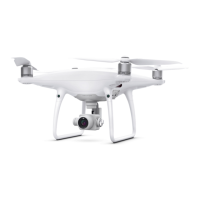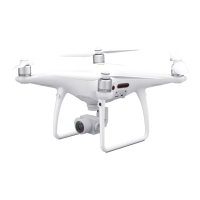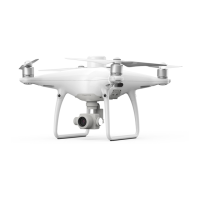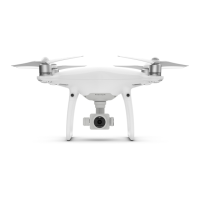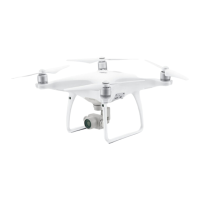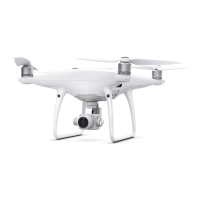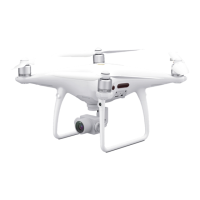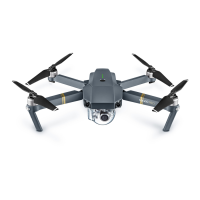DJI Mini 4 Pro
User Manual
52
©
2023 DJI All Rights Reserved.
The aircraft will land automatically if the current battery level can only support the aircraft
long enough to descend from its current altitude. Auto landing cannot be canceled, but the
remote controller can be used to control the horizontal movement and the descent speed of
the aircraft during landing. If there is sucient power, the throttle stick can be used to make
the aircraft ascend at a speed of 1 m/s.
During auto landing, move the aircraft horizontally to nd an appropriate place to land as
soon as possible. The aircraft will fall if the user keeps pushing the throttle stick upward until
the power is depleted.
•
Loss of remote controller signal
The action of the aircraft when the remote controller signal is lost can be set to RTH, land, or
hover in Setting >Safety > Advanced Safety Settings in DJI Fly. If the action is set to RTH, the
Home Point was successfully recorded and the compass is functioning normally, Failsafe RTH
automatically activates after the remote controller signal is lost for more than six seconds.
When the lighting is sufficient and the environment is suitable for the vision systems to
work normally, DJI Fly will display the RTH path that was generated by the aircraft before the
remote controller signal was lost. The aircraft will start RTH using Advanced RTH according
to the RTH settings. The aircraft will remain in RTH even if the remote controller signal is
restored. DJI Fly will update the RTH path accordingly.
When the lighting is not sucient or the environment is not suitable for the vision systems
to work normally, the aircraft will enter Original Route RTH. The aircraft will enter or remain
in Preset RTH if the remote controller signal is restored during RTH. The Original Route RTH
procedure is as follows:
1. The aircraft brakes and hovers in place.
2. When RTH begins:
• If the RTH distance (the horizontal distance between the aircraft and the Home Point)
is farther than 50 m, the aircraft adjusts its orientation and ies backward for 50 m on
its original ight route before entering Preset RTH.
• If the RTH distance is farther than 5 m but less than 50 m, it adjusts its orientation and
ies to the Home Point in a straight line at the current altitude.
• The aircraft lands immediately if the RTH distance is less than 5 m.
3. The aircraft begins to land when it reaches above the Home Point.
• If RTH is triggered through DJI Fly and the RTH distance is farther than 5 m, DJI Fly will
display the two following options: RTH and Landing. Users can select either RTH or
directly land the aircraft.
• The aircraft may not be able to return to the Home Point normally if the positioning
system is functioning abnormally. During Failsafe RTH, the aircraft may enter ATTI mode
and land automatically if the positioning system is functioning abnormally.
• It is important to set a suitable RTH altitude before each ight. Launch DJI Fly and set
the RTH altitude. The default RTH altitude is 100 m.
• The aircraft cannot sense obstacles during Failsafe RTH if the vision systems are
unavailable.
• GEO zones may aect the RTH. Avoid ying near GEO zones.
